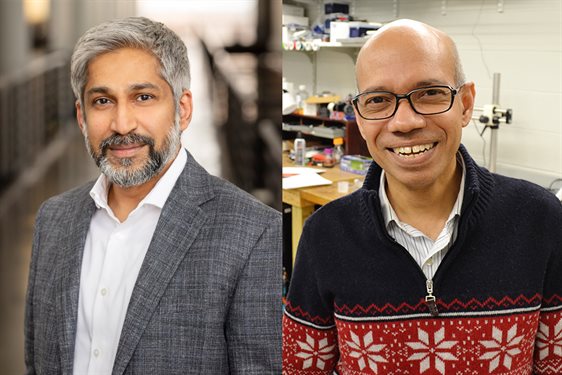NAE memberships are among the highest honors an engineer in the U.S. can receive.
As a result, there are now 25 active NAE members on the GCOE faculty.
At Illinois, Haran studies high specific power cryogenic and non-cryogenic machines for electrified transportation and renewable energy applications. Since 2022, he has served as director of the National Science Foundation Engineering Center for Power Optimization of Electro-Thermal Systems – a key enabler in providing an increase in power density through advanced technology and workforce development. He also is affiliated with the Carle Illinois College of Medicine at Illinois.
Haran’s research has contributed to advanced high-power-density electrical machinery and high-temperature, superconducting technology applications. His group works closely with industry to insert new machine and drive technologies into actual products, and is collaborating with aerospace, renewable energy, and other companies on a range of applications.
In partnership with NASA, Haran’s group recently demonstrated a 1-megawatt electric motor that could help propel future, more environmentally friendly and economically sustainable aircraft. Under ARPA-E support, they are now working on cryogen-free superconducting machines through a university spin-off, Hinetics, LLC, with the goal of making unprecedented improvements in efficiency.
Saif studies the effects of forces at small scales, focusing on nanoscale materials and living cells. His work on deformation in nanomaterials could lead to self-healing metal components, and his work on the effects of cellular forces has opened new research avenues in neuron function, cancer progression and biological robotics. He is a fellow of the American Association for the Advancement of Science and the American Society of Mechanical Engineers. He also is affiliated with bioengineering, the Beckman Institute, the Cancer Center at Illinois, the Carl R. Woese Institute for Genomic Biology and the Carle Illinois College of Medicine.
Among other achievements, Saif was the first to demonstrate that plastic deformation in nanocrystalline metal films can be reversible—raising the possibility of manufacturing metal components that can heal themselves after being deformed. In other work, he and a collaborator demonstrated that neurons are under mechanical tension, and he is now studying the role of tension in neurons on memory and learning.
“The work of both professors Haran and Saif proves that Grainger Engineering faculty answer the call each and every day to leverage their platforms as researchers and engineers to better understand the world’s problems and to craft the answers needed to improve the world around us,” said Rashid Bashir, Dean of The Grainger College of Engineering. “Much of Professor Haran’s emphasis on electrified transportation and renewable energy applications comes at a time when there is a clear trend toward increasing the need for these technologies. Meanwhile, Professor Saif’s focus on nanoscale materials and living cells has an incredible real-world effect through impacts on cancer research, memory and learning, and the potential for self-healing metal components.”
“These sorts of efforts change the world, explain the unique impact Grainger Engineers make on a consistent basis, and are certainly worthy of this wonderful recognition through the National Academy of Engineering.”
Haran and Saif are among 114 new members and 21 international members elected to the academy this year. This brings the total U.S. membership to 2,310 and the number of international members to 332. Academy membership honors those who have made “outstanding contributions to engineering research, practice or education,” according to the NAE.
The new members will be formally inducted Sept. 29 during the NAE’s annual meeting in Washington, D.C.




